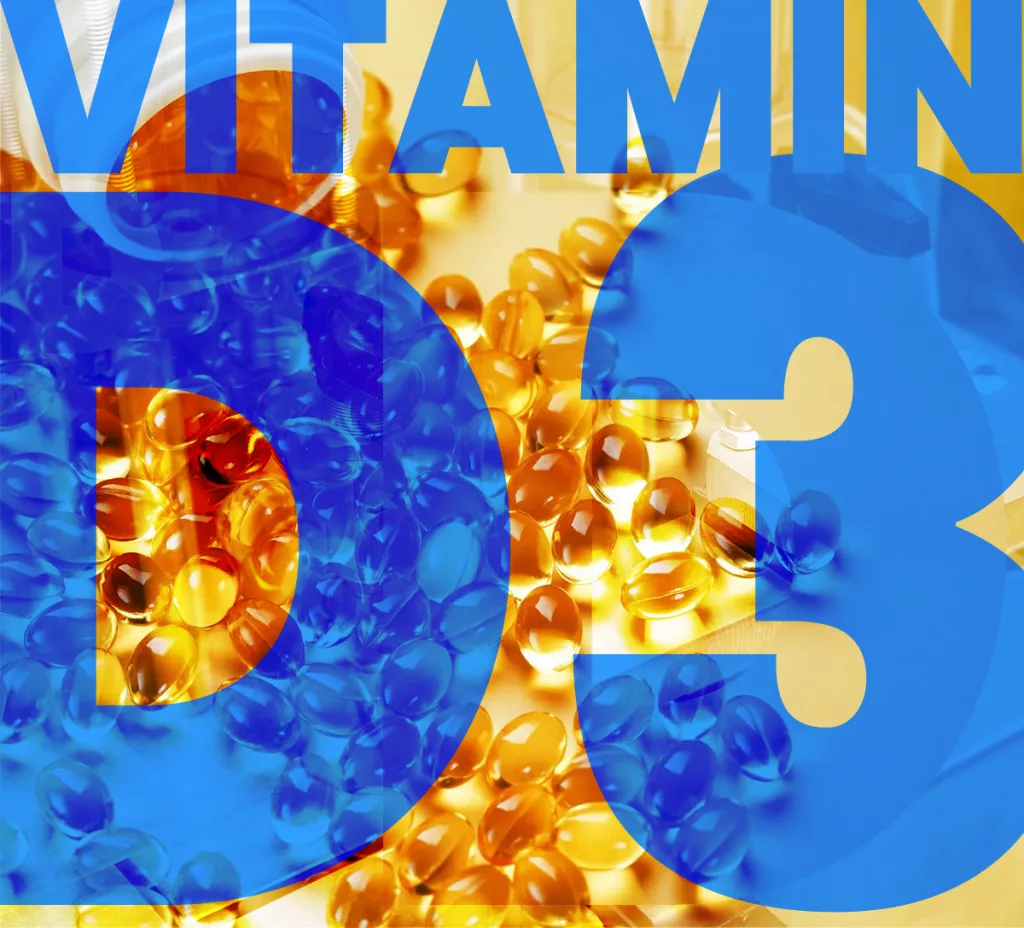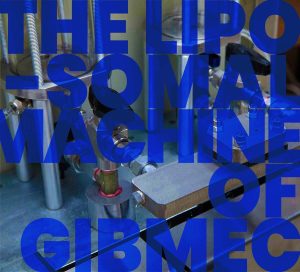Introduction: The Vitamin D Paradox
Vitamin D3 (cholecalciferol) is a cornerstone of immune health, bone metabolism, and inflammation regulation. Yet, despite its critical role, over 1 billion people globally suffer from deficiency due to inadequate sun exposure, dietary limitations, and poor bioavailability of conventional supplements. Traditional oral vitamin D3 formulations face challenges such as rapid degradation in the gut, inconsistent absorption, and dose-limiting toxicity risks like hypercalcemia. Enter microencapsulated liposomal vitamin D3—a cutting-edge delivery system combining nanotechnology, microfluidics, and immunology to revolutionize therapeutic outcomes. This article explores how this innovation addresses inflammation, enhances bioavailability, and redefines personalized nutrition.
What are the benefits of Liposomal Vitamin D3?
Vitamin D insufficiency may be caused by a number of different things at the same time. Because most modern lifestyles take place inside, there is frequently little exposure of the skin to sunshine, despite the fact that sunlight is the primary source of vitamin D3. In addition, those with darker skin tones have a lower vitamin D3 synthesis rate than those with lighter skin. People who don’t expose enough skin to the sun don’t make enough vitamin D3 on their own, so they have to receive it from somewhere else. Microencapsulated Liposomal Vitamin D3 that is delivered in a liposomal form offers a wide range of health advantages, including defense against cancer, inflammation, depression, arthritis, and other conditions.
Microencapsulated Liposomal Vitamin D3 For Kids and Adults
Vitamin D3 can be supplied to kids and children through the use of lipid-based or liposomal D3 drops. Vitamin D3 is necessary for the development and maintenance of bones, the strengthening of muscles, the maintenance of eye health, the stimulation of appetite, the growth of all body tissues, and the maintenance of the normal function of the immune system. Adults who consume this product regularly reduce their risk of developing a variety of chronic conditions.
Microencapsulation is a technique used to control how quickly a medicine is absorbed by the body. This may make it possible for one dosage of medication with controlled release to replace multiple doses of a drug that is not encapsulated. It may also make it possible to lessen the harmful side effects of specific treatments by avoiding high initial concentrations of the substance in the blood.
For the purpose of fabricating drug delivery vesicles of a uniform and customizable size, microfluidics is employed to alter the flow of fluid inside micro channels. Microfluidic technology, because of the ways in which it is designed, offers an alternative and more adaptable platform than conventional approaches for the creation of nanoparticles.
The Science of Liposomal Microencapsulation
1. Liposomes: Nature-Inspired Drug Delivery Vehicles
Liposomes are spherical vesicles with phospholipid bilayers mimicking cell membranes, enabling them to encapsulate both hydrophilic and hydrophobic compounds like vitamin D3. Their structure protects sensitive molecules from enzymatic degradation while facilitating targeted delivery to cells. Recent advancements in microfluidics—a technology that manipulates fluids at the microscale—allow precise control over liposome size (50–200 nm), uniformity, and drug-loading efficiency. For instance, studies show that liposomal vitamin D3 (VD-LP) prepared via microfluidic hydrodynamic focusing achieves 85% encapsulation efficiency and sustained release over 14 days.
2. Microencapsulation: Stability Meets Bioavailability
Microencapsulation involves coating vitamin D3 in lipid nanoparticles or polymers to enhance stability and absorption. Unlike oil-based supplements, which rely on dietary fats for uptake, microencapsulated formulations are water-dispersible and bypass hepatic first-pass metabolism. A 2024 rodent study demonstrated that microencapsulated vitamin D3 increased serum 25(OH)D levels by 300% within 3 days, with effects persisting for 14 days post-administration. This “stealth” delivery system also prevents oxidation and pH-driven degradation, making it ideal for functional foods and nutraceuticals.
Anti-Inflammatory Mechanisms: From Dendritic Cells to Clinical Applications
1. Immune Modulation via Regulatory T Cells (Tregs)
Liposomal vitamin D3 exerts potent anti-inflammatory effects by reprogramming dendritic cells (DCs)—key orchestrators of immune responses. A 2023 study found that VD3-loaded liposomes induced tolerogenic DCs, which suppressed pro-inflammatory T helper 1 (Th1) and Th17 cells while promoting FoxP3+ regulatory T cells (Tregs). These Tregs inhibit bystander T-cell proliferation and cytokine storms, offering therapeutic potential for autoimmune diseases like rheumatoid arthritis and multiple sclerosis.
2. Targeting the Vitamin D Receptor (VDR) Pathway
Vitamin D3 binds to the VDR, a nuclear receptor expressed in immune cells, to modulate gene expression. Liposomal encapsulation enhances VDR activation by prolonging systemic circulation and cellular uptake. Preclinical models of colorectal and prostate cancers revealed that VD-LP upregulated antimicrobial peptides and downregulated pro-inflammatory cytokines like TNF-α and IL-6, delaying tumor growth without inducing hypercalcemia.
Microfluidics: The Engine of Precision Manufacturing
1. Advantages Over Conventional Methods
Traditional liposome production methods (e.g., thin-film hydration) suffer from batch variability and low scalability. Microfluidics enables continuous, high-throughput synthesis of monodisperse liposomes with tunable properties. For example, 3D-printed microfluidic chips with Y-shaped mixers achieve rapid solvent diffusion, yielding liposomes <100 nm in size—optimal for passive tumor targeting via the enhanced permeability and retention (EPR) effect.
2. Case Study: Curcumin-VD3 Co-Delivery
A 2022 study utilized microfluidics to co-encapsulate curcumin and vitamin D3 in nanoliposomes. The dual-loaded system synergistically reduced oxidative stress in macrophages and extended release kinetics to 10 hours, outperforming free compounds. Such innovations highlight microfluidics’ role in multifunctional nutraceutical design.
Market Potential and Consumer Applications
1. Beyond Supplements: Functional Foods and Cosmeceuticals
Microencapsulated liposomal vitamin D3 is FDA-approved for food fortification in cereals, dairy alternatives, and beverages. Its stability under heat and UV exposure makes it ideal for baked goods and sports nutrition products. Brands like BIOTEST® already market microencapsulated D3 for immune support, citing a 56% deficiency rate among athletes.
2. Personalized Medicine and Make-to-Order Solutions
The rise of “Liposume” (liposome-based consumer products) aligns with demand for personalized nutrition. Microfluidic platforms allow manufacturers to tailor liposome size, charge, and release profiles for specific demographics—e.g., rapid-release gels for elderly populations or pH-sensitive formulations for gut health.

Conclusion: The Future of Vitamin D3 Therapeutics
GIBMEC is a made-to-order microfluidics company specializing in high-efficiency encapsulation solutions. For make-to-order vitamin D, ORDER NOW. Microencapsulated liposomal vitamin D3 represents a paradigm shift in combating inflammation and deficiency. By marrying microfluidics with immunology, this technology offers unparalleled precision, safety, and efficacy. As research advances, expect to see applications in mRNA vaccine adjuvants, neurodegenerative disease management, and even anti-aging skincare. For consumers and clinicians alike, the message is clear: the future of vitamin D is nano-sized.
Read more about “Liposomes in Drug Delivery | How Are They Used In Drug Delivery?”
Read more about “Recent Advances in the Use of Vitamin D Organic Nanocarriers for Drug Delivery”
References
- Frontiers in Immunology (2025). Liposomal encapsulation of cholecalciferol mitigates in vivo toxicity and delays tumor growth. [DOI:10.3389/fimmu.2025.1529007]
- Advanced Drug Delivery Reviews (2018). Advances in microfluidics for lipid nanoparticles and extracellular vesicles. [DOI:10.1016/j.addr.2018.03.005]
- International Journal of Molecular Sciences (2021). 3D-Printed Microfluidic Devices for Liposomal Synthesis. [DOI:10.3390/ijms22158064]
- Biomolecules (2024). Organic Nanocarriers for Vitamin D Delivery. [DOI:10.3390/biom14091090]
- BIOTEST® (2025). Microencapsulated Vitamin D3 Product Overview. [URL:biotest.net]
- Scientific Reports (2023). Microfluidics-Driven Liposome Optimization. [DOI:10.1038/s41598-023-XXXXX]
- Frontiers in Immunology (2023). Liposomal VD3 Induces Tolerogenic Dendritic Cells. [DOI:10.3389/fimmu.2023.1137538]
- PMC (2019). Bioavailability of Microencapsulated Vitamin D3. [DOI:10.3390/medicina55060265]




